| Date | Text | |
|---|---|---|
30 Nov 1902
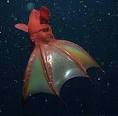
vampire squid |
vampire squid (biology) The type specimen of the vampire squid (Vampyroteuthis infernalis) is described by Carl Chun. |
|
30 Nov 1902

Fauna and Flora International |
Fauna and Flora International (biology) Fauna and Flora International is founded as the Society for the Preservation of the Wild Fauna of the Empire by a group of British naturalists and American statesmen in Africa. |
|
30 Nov 1902

Johnston Laboratories |
Johnston Laboratories (biology) Formal opening of the Johnston Laboratories at the University of Liverpool, Liverpool, England. |
|
30 Nov 1902
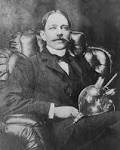
Peter Cooper Hewitt |
Peter Cooper Hewitt (chemistry) Peter Cooper Hewitt demonstrates the mercury-vapour lamp. |
|
30 Nov 1902
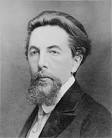
Mikhail Semyonovich Tsvet |
Mikhail Semyonovich Tsvet (chemistry) Mikhail Semyonovich Tsvet invents chromatography, an important analytic technique. |
|
30 Nov 1902

International Committee of Atomic Weights |
International Committee of Atomic Weights (chemistry) The International Committee of Atomic Weights publishes the inaugural atomic weights report. |
|
30 Nov 1902

Fast Fourier Transform |
Fast Fourier Transform (mathematics) Fast Fourier Transform algorithm presented by Carle David Tolmé Runge. |
|
30 Nov 1902

Edmund Georg Hermann Landau |
Edmund Georg Hermann Landau (mathematics) Edmund Georg Hermann Landau gives considerably simpler proof of the prime number theorem. |
|
30 Nov 1902

Ernest Fourneau |
Ernest Fourneau (medicine) Ernest Fourneau synthesizes and patents Amylocaine, the first synthetic local anesthetic, under the name Stovaine at the Pasteur Institute. |
|
30 Nov 1902

Willem Einthoven |
Willem Einthoven (medicine) Willem Einthoven discovers electrocardiography (ECG/EKG) |
|
30 Nov 1902

Richard von Krafft-Ebing |
Richard von Krafft-Ebing (medicine) The 12th and final edition of Dr Richard von Krafft-Ebing's Psychopathia Sexualis: eine Klinisch-Forensische Studie ("Sexual Psychopathy: a Clinical-Forensic Study") published during the author's lifetime introduces the term paedophilia erotica. |
|
30 Nov 1902
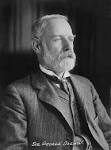
George Darwin |
George Darwin (physics) George Darwin and John Joly claim that radioactivity is partially responsible for the Earth's heat. |
|
30 Nov 1902
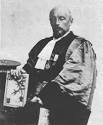
Prosper-René Blondlot |
Prosper-René Blondlot (physics) Prosper-René Blondlot claims to have detected N rays. |
|
30 Nov 1902

diesel |
diesel (technology) The first diesel-powered ships are launched, both for inland waters: Petite-Pierre in France, powered by Dyckhoff-built diesels, and the tanker Vandal in Russia, powered by Swedish-built diesels with an electrical transmission. |
|
30 Nov 1902

Norwegian |
Norwegian (technology) Norwegian engineer Ægidius Elling builds the first gas turbine to generate power, using a centrifugal compressor. |
|
30 Nov 1902

Laminated glass |
Laminated glass (technology) Laminated glass is invented by Edouard Benedictus. |
|
30 Nov 1902

Baker valve gear |
Baker valve gear (technology) Baker valve gear for steam locomotives is first patented in the United States. |
|
30 Nov 1902

Lune Valley boiler |
Lune Valley boiler (technology) The Lune Valley boiler is patented by John G. A. Kitchen and Ludlow Perkins. |
|
22 Jan 1903
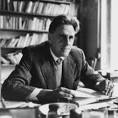
Fritz Houtermans |
birth Fritz Houtermans Fritz Houtermans (died 1966), physicist. |
|
27 Jan 1903

John Carew Eccles |
birth John Carew Eccles John Carew Eccles (died 1997), psychologist. |
|
28 Jan 1903
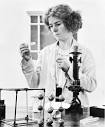
Kathleen Lonsdale |
birth Kathleen Lonsdale Kathleen Lonsdale, née Yardley (died 1971), Irish-born crystallographer. |
|
01 Feb 1903

George Gabriel Stokes |
death George Gabriel Stokes George Gabriel Stokes (born 1819), mathematician and physicist. |
|
02 Feb 1903
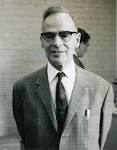
Bartel Leendert van der Waerden |
birth Bartel Leendert van der Waerden Bartel Leendert van der Waerden (died 1996), mathematician. |
|
22 Feb 1903

Frank P. Ramsey |
birth Frank P. Ramsey Frank P. Ramsey (died 1930), mathematician. |
|
01 Mar 1903

David Bruce |
David Bruce (medicine) April – David Bruce identifies the parasitic Trypanosoma protist as the source of African trypanosomiasis ("sleeping sickness"). |
|
14 Mar 1903

US bird sanctuary |
US bird sanctuary In 1903, the first U.S. national wild life refuge, was established with an Executive Order by President Theodore Roosevelt. This created a bird sanctuary for the nesting colony of pelicans and herons of the 5.5-acre Pelican Island, Indian River, east of Orlando, on the central Atlantic coast of Florida. In 1859, there were thousands of herons, egrets, pelican, ibises and spoonbills. But, they were so heavily slaughtered for their plumage used in women's fashion, that by 1903 only brown pelicans were left. The island was “reserved and set aside ... as a preserve and breeding ground for native birds.” Conservationist Paul Kroegel was made first Game Warden. Yet in Spring 1918, commercial fishermen killed more hundreds of pelican chicks, wrongly believing pelicans reduced the fish population. Since 1943, the island land area has halved, eroded by watercraft traffic, but the bird diversity has improved. |
|
28 Mar 1903

Emile Baudot |
death Emile Baudot Emile Baudot (born 1845), telegraph engineer. |
|
31 Mar 1903
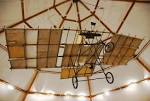
Richard Pearse flies |
Richard Pearse flies In 1903, New Zealander Richard Pearse (1877-1953) reputedly flew a powered heavier-than-air machine, some nine months before the Wright brothers' more famous and well documented flight. Pearse built a high-wing monoplane powered by his design of a petrol engine. Accounts vary, but his flight was probably 350 yards in the air, though uncontrolled, ending with the machine striking a large hedge. The aircraft was the first to use proper ailerons, instead of the inferior wing warping system that the Wright's used. Also, Pearse's machine had a modern tricycle undercarriage permitting takeoff without ramps or skids. However, his propeller was cruder than the Wrights'. Some sources date his first flight to 31 Mar 1902, and others later. |
|
31 Mar 1903
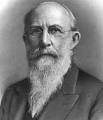
Ebenezer Butterick |
death Ebenezer Butterick Died 31 Mar 1903 at age 76 (born 29 May 1826). American manufacturer who is regarded as the inventor of graded paper patterns for clothing (1859), first sold in Sterling in Jun 1863. Formerly, a sewer had to enlarge or reduce from one standard pattern to make the required size. As a tailor, Butterick understood the need, and filled it by supplying tissue paper patterns in sizes. At first, these graded sewing patterns were cut and folded by members of his family and sold from their home in Sterling, Massachusetts. The business grew quickly, and in 1869 he moved to New York City. A box of one hundred patterns were sold at a wholesale price of $10 (retail $25). Also in 1869, he founded Metropolitan, a fashion magazine, to promote pattern sales. In the following years, he established subsidiary offices in all important centres in the U.S. and abroad. |
|
06 Apr 1903
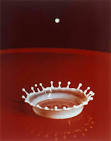
Doc Edgerton |
birth Doc Edgerton Doc Edgerton, (died 1990), professor electrical engineer. |
|
09 Apr 1903

Gregory Pincus |
birth Gregory Pincus Born 9 Apr 1903; died 22 Aug 1967 at age 64. Gregory (Goodwin) Pincus was an American endocrinologist whose work on the antifertility properties of steroids led to the development of the first effective oral contraceptive: the birth-control pill. In 1934, Pincus made national headlines by achieving in-vitro fertilization of rabbits. The public was not ready for the vision of test-tube babies; instead of fame, he received notoriety. Consequently, he moved a small independent laboratory. There he did applied research, especially on steroids. In 1953, he was approached about developing a new form of contraception. He focussed on using progesterone as an effective anti-ovulent, and showed it could be a good contraceptive drug. In 1960, a synthetic progesterone drug was approved for contraceptive use. |
|
09 Apr 1903

Gregory Goodwin Pincus |
birth Gregory Goodwin Pincus Gregory Goodwin Pincus (died 1967), American biologist who co-invented the combined oral contraceptive pill. |
|
13 Apr 1903

Moritz Lazarus |
death Moritz Lazarus Died 13 Apr 1903 at age 78 (born 15 Sep 1824). German philosopher and psychologist, who was a founder of comparative psychology. He held that humanity must be studied from the historical, comparative viewpoint, analyzing the elements that constitute the fabric of society, with its customs, its conventions, and the main tendencies of its evolution. He was Jewish and a leading opponent of anti-Semitism in his time. |
|
25 Apr 1903

Andrey Nikolayevich Kolmogorov |
birth Andrey Nikolayevich Kolmogorov Born 25 Apr 1903; died 20 Oct 1987 at age 84. Russian mathematician whose basic postulates for probability theory that have continued to be an integral part of analysis. This work had diverse applications such as his study of the motion of planets (1954), or the turbulent air flow from a jet engine (1941). In topology, he investigated cohomology groups. He made a major contribution to answering the probability part of Hilbert's Sixth Problem, and completely resolved (1957) Hilbert's Thirteenth Problem. Kolmogorov was active in a project to provide special education for gifted children, not only by writing textbooks and in teaching them, but in expanding their interests to be not necessarily in mathematics, but with literature, music, and healthy activity such as on hikes and expeditions. |
|
25 Apr 1903

Andrey Nikolaevich Kolmogorov |
birth Andrey Nikolaevich Kolmogorov Andrey Nikolaevich Kolmogorov (died 1987), mathematician. |
|
28 Apr 1903
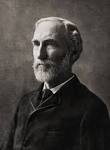
Willard Gibbs |
death Willard Gibbs Willard Gibbs (born 1839), physical chemist. |
|
02 May 1903

Benjamin Spock |
birth Benjamin Spock Benjamin Spock (died 1998), pediatrician, writer. |
|
10 May 1903

Antoni Leśniowski |
Antoni Leśniowski (medicine) Antoni Leśniowski publishes the first article implicating what will later be known as Crohn's disease, in the Polish weekly medical newspaper Medycyna. |
|
15 May 1903

Maria Reiche |
birth Maria Reiche Born 15 May 1903; died 8 Jun 1998 at age 95. German-born Peruvian mathematician and archaeologist who was the self-appointed keeper of the Nazca Lines, a series of desert ground drawings over 1,000 years old, near Nazcain in southern Peru. For 50 years the "Lady of the Lines" studied and protected these etchings of animals and geometric patterns in 60 km (35 mi) of desert. Protected by a lack of wind and rain, the figures are hundreds of feet long best seen from the air. She investigated the Nazca lines from a mathematical point of view. Death at age 95 interrupted her new mathematical calculations: the possibility that the lines predicted cyclical natural phenomena like El Nino, a weather system that for centuries has periodically caused disastrous flooding along the Peruvian coast. |
|
10 Jun 1903

Luigi Cremona |
death Luigi Cremona Died 10 Jun 1903 at age 72 (born 7 Dec 1830). Antonio Luigi Gaudenzio Giuseppe Cremona was an Italian mathematician who was an originator of graphical statics (the use of graphical methods to study forces in equilibrium) and work in projective geometry. Cremona's work in statics is of great importance and he gave, in a clearer form, some theorems due to Maxwell. In a paper of 1872 Cremona took an idea of Maxwell's on forces in frame structures that had appeared in an engineering journal in 1867 and interpreted Maxwell's notion of reciprocal figures as duality in projective 3-space. These reciprocal figures, for example, have three forces in equilibrium in one figure represented by a triangle while in the reciprocal figure they are represented by three concurrent lines. |
|
14 Jun 1903

Alonzo Church |
birth Alonzo Church Alonzo Church (died 1995), American mathematician. |
|
25 Jun 1903

Ph.D. for Curie |
Ph.D. for Curie In 1903, Marie Curie went before the examination committee for her Ph.D. Later in this same year she was awarded a Nobel Prize for her research. |
|
03 Jul 1903

Transpacific cable |
Transpacific cable In 1903, the first cable across the Pacific Ocean between Hawaii, Midway, Guam and Manila was completed and spliced at Manila, Philippine Islands. After testing, the first official message was sent the next day. The first section of the cable across the Pacific Ocean between San Francisco and Hawaii had already been established at the beginning of the same year, with its first official message sent on 1 Jan 1903. That technological event ended Hawaii's isolation by connecting it to the mainland U.S. and the rest of the world. The cable was a mainstay of communications into the early 1950s when newer technology rendered it obsolete. (The 1902 all-British telegraph line from Canada to Australia and New Zealand was the first line to cross the Pacific Ocean.) |
|
21 Jul 1903

Henri Alexis Brialmont |
death Henri Alexis Brialmont Henri Alexis Brialmont (born 1821), military engineer. |
|
02 Aug 1903

Edmond Nocard |
death Edmond Nocard Edmond Nocard (born 1850), French veterinarian and microbiologist. |
|
07 Aug 1903
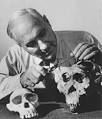
Louis Leakey |
birth Louis Leakey Louis Leakey (died 1972), British East African paleoanthropologist. |
|
01 Oct 1903

Frank Nelson Cole |
Frank Nelson Cole (mathematics) Frank Nelson Cole demonstrates that the Mersenne number 2-1, or M67, is composite by factoring it as 193,707,721 * 761,838,257,287. |
|
04 Oct 1903

Cyril Stanley Smith |
birth Cyril Stanley Smith Cyril Stanley Smith (died 1992), English-born metallurgist. |
|
05 Oct 1903
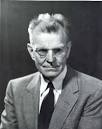
M. King Hubbert |
birth M. King Hubbert M. King Hubbert (died 1989), geophysicist. |
|
10 Oct 1903
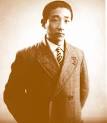
Bei Shizhang |
birth Bei Shizhang Bei Shizhang (died 2009), Chinese biologist and founder of the Institute of Biophysics, Chinese Academy of Sciences. |
|
07 Nov 1903

Konrad Lorenz |
birth Konrad Lorenz Konrad Lorenz (died 1989), zoologist. |
|
27 Nov 1903

Lars Onsager |
birth Lars Onsager Lars Onsager (died 1976), chemist. |
|
05 Dec 1903

Cecil Frank Powell |
birth Cecil Frank Powell Born 5 Dec 1903; died 9 Aug 1969 at age 65. English physicist who was awarded the Nobel Prize for Physics in 1950 for his development of the photographic method of studying nuclear processes and for the resulting discovery of the pion (pi-meson), a heavy subatomic particle. The pion proved to be the hypothetical particle proposed in 1935 by Yukawa Hideki of Japan in his theory. |
|
08 Dec 1903
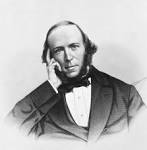
Herbert Spencer |
death Herbert Spencer Died 8 Dec 1903 at age 83 (born 27 Apr 1820). English sociologist and philosopher who was an early adherent of evolutionary theory. He regarded society as an organism which was evolving from a simple primitive state to a complex heterogeneous form according to the designs of an unknown and unknowable absolute force. Similarly, knowledge developed from an undifferentiated mass into the various separate sciences. Formulating his ideas independently of Darwin, Spencer coined the phrase “survival of the fittest” as early as 1852. He applied Darwin's theory of natural selection (proposed four years later) to social development and in A System of Synthetic Philosophy (1862-96) presented a philosophical system to the natural and social sciences, synthesizing metaphysics, biology, psychology, sociology, and ethics. |
|
12 Dec 1903

Ross F. Nigrelli |
birth Ross F. Nigrelli Born 12 Dec 1903; died 4 Oct 1989 at age 85. Ross Franco Nigrelli was an American marine biologist who was an expert on diseases of sea life, and was first to discover virus-induced tumours in fish. He investigated plankton blooms, such as the red tides of the 1940s along Florida's Gulf Coast that caused a die-off of millions of fish. He studied how the health of marine organisms was affected by, as well as changes in salinity or water temperature. As one of the earliest systematic researchers of venoms released by some marine life, and their uses of their extracts as sources of useful drugs. For example, he discovered that a secretion of Bahamian sea cucumbers that was fatal to fish, even in minute quantities. Yet, it could slow the growth of tumours in mice. He also found that certain secretions of sea sponges had antibacterial properties, and that the blood of horseshoe crabs could detect blood poisoning in humans. |
|
19 Dec 1903

George Davis Snell |
birth George Davis Snell George Davis Snell (died 1996), American mouse geneticist and basic transplant immunologist. |
|
22 Dec 1903

Haldan Keffer Hartline |
birth Haldan Keffer Hartline Born 22 Dec 1903; died 17 Mar 1983 at age 79. American physiologist who shared (with George Wald and Ragnar Granit) the 1967 Nobel Prize for Physiology or Medicine for his analysis of how the sensory cells of the retina of the eye evaluate the light stimulus. In his early career, he studied the metabolism of nerve cells and in time came to research individual cells in the retina of the eye. He used tiny electrodes to isolate individual fibres in the eyes of horseshoe crabs and frogs. He learned how impulse generation in the sensory cells transmits a code in response to illumination of different intensity and duration. He spent almost half a century advancing the understanding of the neurophysiology of vision. |
|
28 Dec 1903
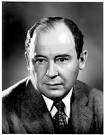
John von Neumann |
birth John von Neumann John von Neumann (died 1957), mathematician. |